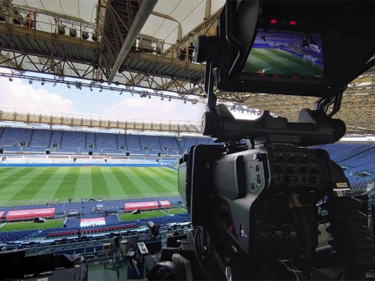| Українська | English | |||||||||||
|
|||||||||||
| News | About company | Service-centre | OB Van/SNG Rental | NextGen Energy Solutions | Contact us |
|
|
Engineering Service, Inc.
» News News TVBEurope spoke with Olivier Bovis, Head of Media Solutions at Sony Europe, to explore what 2025 might hold for production, live production, and virtual production.
With multiple global events occurring last year, it was the perfect opportunity for those in the industry to try out new technologies, seeing what sticks, and what doesn’t. An example of this can be seen in the way the potential benefits of AI and cloud technology completely dominated conversations around workflows in 2024, as people began to realise the technologies’ ability to cut down on both time and resources during the production process. AI in particular is still a technology that is yet to find its full range of possible applications, but the future looks hopeful. The growing use of IP-based, and software-defined workflows in place of legacy hardware-based workflows was another major example of trying new things. 2024 saw the emergence of a transitional phase, in which legacy systems have coexisted and slowly been replaced by IP systems. This development started to change how the M&E industry goes about capturing and producing content. Previously what took an entire hardware setup to do can now be achieved with software. Couple that with multiple successful trials that tested the use of 5G for live transmissions at big live events around the world, meant 2024 saw some promising new ways to produce live content. Traditionally, the M&E industry has heavily been impacted by the process of upgrading workstations. Hardware-based stations would take a vast amount of time and resources to upgrade, as new hardware would have to be shipped in and installed, while the old workflow would have to be removed and disposed of. However, software-defined broadcasting is starting to make the process of upgrading far more efficient. Outside of upgrades, the trend of trying new things also rapidly increased workflow efficiencies, meaning broadcasters can now automate certain tasks and dedicate more time to the ones that require creativity. The countless important political and sporting events that took place around the world last year meant those in the M&E industry used those opportunities to explore/trial and harness the possibilities offered. Comparatively, 2025 will be a quieter year, one of consolidation – making these changes tangible, rolling them out, embedding them more broadly in day-to-day operations. We anticipate that 2025 will be the year that virtual production will take the leap from being a tool that is primarily used in cinema and advertising, to an all-around comprehensive solution to all of those in the M&E industry. We are seeing this trend emerge even now, as broadcasters are beginning to tap into virtual productions potential for time efficiencies, which is of course a critical benefit for an industry that aims to deliver news as quickly and effectively as possible.
« To the list of news |
|
|||||||||||||||||
 |
+38 (044) 593-18-20 +38 (073) 593-18-20 +38 (096) 532-96-82 +38 (095) 532-96-82 Service center Telegram @Engineer_Service |

|
|
|||||
 |
e-mail: engineer-service.tv 15 Vavylovykh str., Kiev, 04060, Ukraine Authorized service centre of Panasonic, Sony, JVC, Fujinon, Canon |
|||||||







